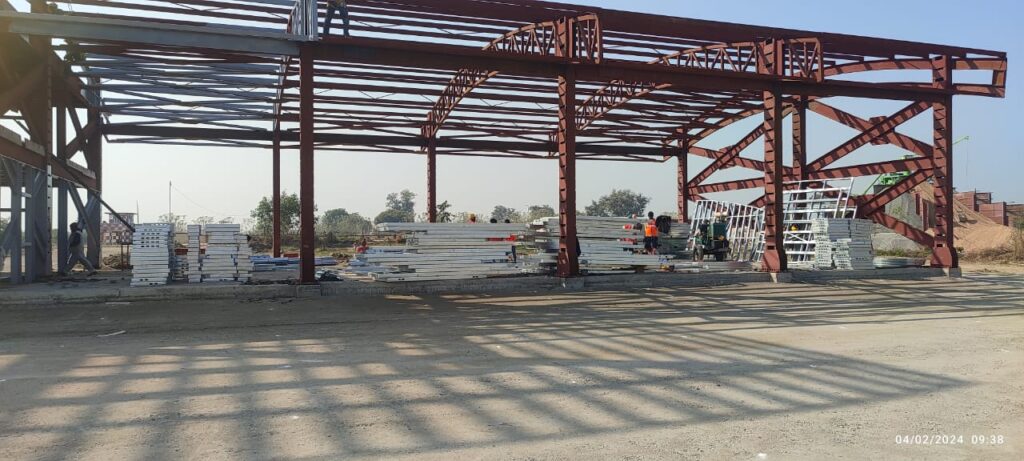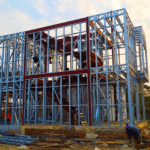What is a Pre-Engineered building
Pre-engineered(PEB) construction is a method of construction where the structural components of a building are designed, engineered, and fabricated off-site in a controlled environment before being transported to the construction site for assembly. This approach is also known as prefabricated construction or modular construction. The term “pre-engineered” (PEB) implies that the structural elements are pre-designed and manufactured to meet specific engineering standards and requirements.
In pre-engineered (PEB) construction, various building components are produced in a factory or manufacturing facility, including walls, floors, roofs, and other structural elements. These components are then transported to the construction site where they are assembled to form the complete structure.

Key features of pre-engineered buildings include:
Design and Engineering
PEBs are designed and engineered using computer-aided design (CAD) software to ensure accuracy and efficiency. The design process includes determining the optimal arrangement of structural elements and components.
Standardization
PEBs often use standard components that are mass-produced in a factory. This standardization helps reduce costs and streamline the manufacturing process.
Factory Fabrication
The structural components, such as columns, beams, and roof panels, are manufactured in a factory setting. This controlled environment ensures precision and quality control.
Ease of Assembly
Once the components are fabricated, they are shipped to the construction site for assembly. The assembly process is typically faster compared to traditional construction methods because the components are designed to fit together seamlessly.
Cost Efficiency
The controlled manufacturing process and standardization contribute to cost efficiency. PEBs are often more economical than traditional construction methods, making them attractive for various applications, including warehouses, industrial buildings, and commercial structures.
Versatility
Pre-engineered buildings can be customized to meet specific design and functional requirements. They are versatile and can accommodate a variety of architectural features.
Energy Efficiency
PEBs can be designed with energy-efficient features, such as insulation and ventilation systems, to meet sustainability and energy conservation goals.
Pre-engineered(PEB) construction is commonly used in a variety of building types, including residential structures, commercial buildings, industrial facilities, and even infrastructure projects. It is particularly well-suited for projects with repetitive design elements, such as hotels, apartment buildings, and warehouses. The method has gained popularity due to its efficiency, cost-effectiveness, and sustainability benefits.






















